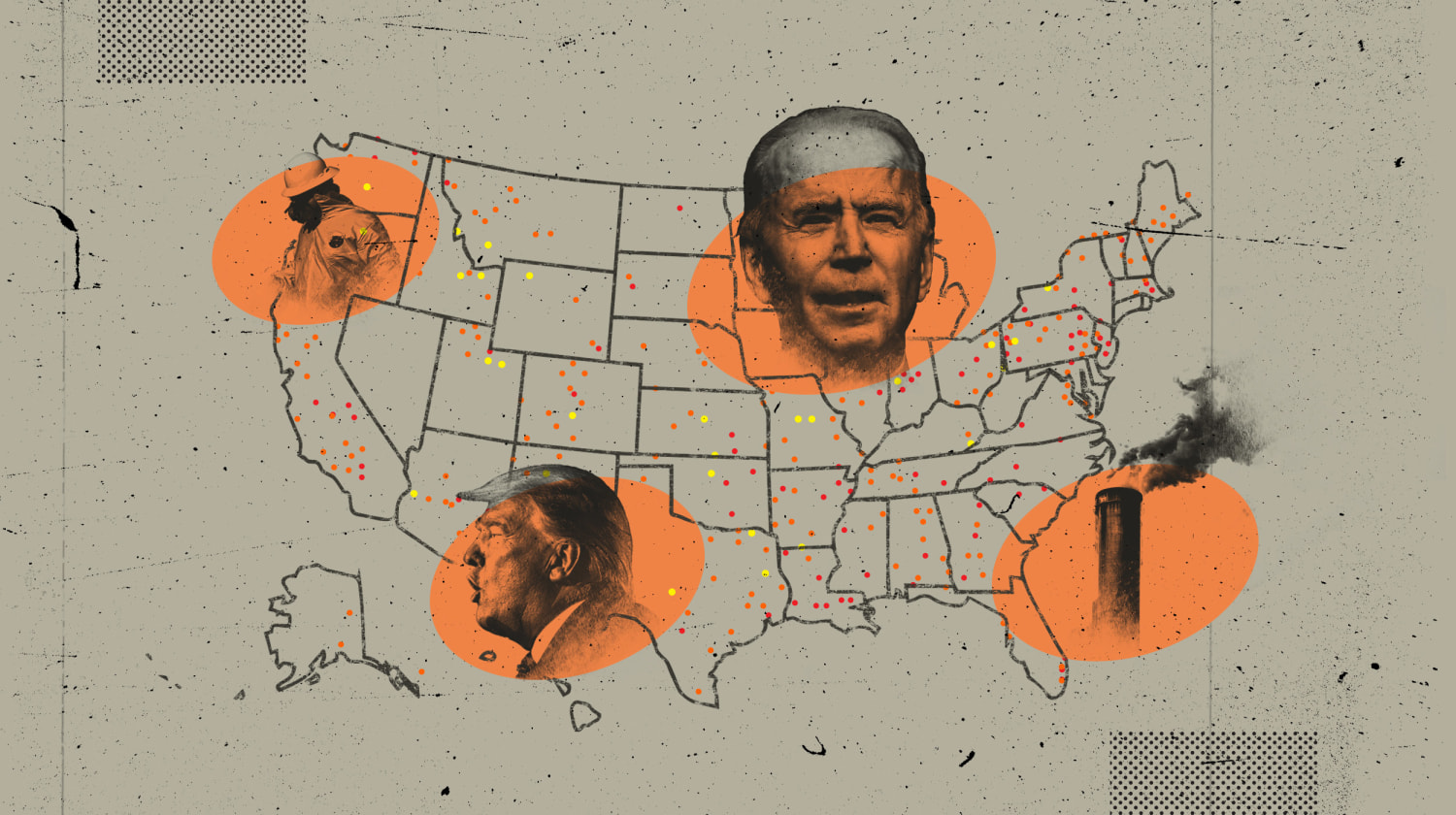The backlog of unfunded Superfund sites, in 17 states and Puerto Rico, includes an abandoned mine in Maine where an open tailings pit is contaminated with arsenic and lead; a wood preserving facility in Louisiana contaminated with creosote and a toxic stew of volatile organic compounds; and a grain storage facility in Nebraska tainted by a fumigant containing carbon tetrachloride. Nineteen of the 34 are threatened by climate change, the GAO found.
Kathy Setian, a former EPA Superfund site manager, cautioned that some of these unfunded sites present unknown dangers because they have not had the same sustained remediation work as fully funded cleanup sites.
“If there are climate change threats to the unfunded sites, we don’t know what they are because we are not even looking at them for remediation,” Setian said. “The threats are not being addressed.”
Reviewing Trump’s deals
Beyond Whitehouse’s call for climate-threat assessments at every site, one senior former EPA official said the incoming Biden administration should review all of the agreements negotiated by the Trump EPA at Superfund sites with corporations liable for cleanups.
“You will want to see if the responsible parties were being given preferential treatment,” said Mathy Stanislaus, who served as assistant administrator of the EPA’s Office of Land and Emergency Management during the Obama administration.
Stanislaus said such reviews should focus first on any agreements negotiated since the election by the lame-duck Trump EPA. Since 2019, the agency has been run by Andrew Wheeler, a former coal industry lobbyist, while the Superfund program is led by Peter C. Wright, a lawyer who previously worked for Dow Chemical and represented the company in negotiations with the EPA over Superfund sites.
Stanislaus said he’s also concerned about a 2017 list of recommendations spelling out ways to streamline the cleanup process suggested by a Superfund Task Force established by Scott Pruitt, Trump’s first EPA administrator. As Oklahoma’s attorney general, Pruitt was one of the EPA’s most hostile critics.
One of the incentives Pruitt tasked the EPA to consider as a means of speeding cleanups was reducing the burden on “cooperating parties,” or companies that are working with the EPA to decontaminate their sites, an objective Stanislaus said could be read as an invitation to cut favorable deals with industry. The task force also recommended reducing oversight costs for corporations “that perform timely, high-quality work.”
The EPA did not respond to requests for comment.
In September 2017, Pruitt scored points with community leaders and environmental activists in Houston when he visited a notorious Superfund site, the San Jacinto Waste Pits, that had been inundated by floodwaters during Hurricane Harvey.
An EPA dive team had just confirmed that damage to a concrete cap had led to a leak of dioxin downriver, and Pruitt announced that the highly dangerous human carcinogen would finally be removed from the site.
But as the incoming Biden administration takes over the program, the Trump timeline for removal has now been extended from 27 months to an estimated seven years, and the EPA has relaxed proposed requirements for disposal of the waste. Environmentalists have argued that site sampling was flawed and that the removed waste must be disposed of at a more secure site than is currently proposed.
Rock Owens, who oversaw the Harris County Attorney’s environmental division for more than 20 years before his retirement in October, said he hopes the new team will impose tougher disposal standards.
“As they go through the design process, those things will be reviewed — and our hope is that those issues about disposal will be fleshed out,” he said.
In the meantime, the San Jacinto Waste Pits remain vulnerable to further leaks — especially with stronger hurricanes spurred by climate change.
In vulnerable coastal counties like Harris, Owens said, “we’ve got to solve the problem of climate change — it ties to everything.”
Environmental justice: Years of broken promises
When the Obama EPA went looking in 2009 for 10 disadvantaged neighborhoods close to Superfund sites to participate in an Environmental Justice Showcase Communities program, officials selected Eastside in Jacksonville, Florida, near the Kerr-McGee Superfund site, a former pesticide and fertilizer manufacturing and storage facility.
Each of the 10 communities, from Staten Island, New York, to Yakima Valley, Washington, received $100,000 grants to address environmental justice issues. The relatively small amount spoke to the modest ambitions of the EPA’s environmental justice program at the time.
In Jacksonville, there was talk of building a comprehensive health care center. But the program only included enough funding for a study of fish and shellfish in local fishing streams, the posting of 24 signs warning of the hazards of eating the fish, and a seminar on how to build rain barrels, according to the EPA.
“We’ve been knocking on EPA’s door for 20 years,” said Teena Anderson, a member of the Eastside Environmental Council, a grassroots organization formed to represent the residents around the Kerr-McGee site, which advocated for job training, nutrition programs and aid for seniors. “We don’t have much to show for it.”
Trump’s latest budget proposal included a 70 percent reduction in EPA spending on environmental justice programs, from $9.5 million to $2.7 million.
Mustafa Santiago Ali, who served as an associate administrator in the EPA’s environmental justice office in the Obama administration, said he understands the cynicism Anderson feels after years of unfulfilled expectations.
“There is going to have to be a rebuilding of trust between the federal government and front-line communities,” said Ali, who is now vice president of environmental justice, climate and community revitalization for the National Wildlife Federation.
Biden has proposed elevating the EPA’s Environmental Justice Advisory Council and the Environmental Justice Interagency Council as White House entities, with both reporting to the chair of the White House Council on Environmental Quality.
In addition to creating the Environmental and Climate Justice Division within the Justice Department, Biden has proposed overhauling the EPA’s External Civil Rights Compliance Office to empower communities under Title VI of the 1964 Civil Rights Act “that experience the worst impacts of climate change and fenceline communities that are located adjacent to pollution sources.”
For that, his EPA need look no further than the Superfund program.
An EPA study in September found that a disproportionate number of people of color lived within 3 miles of Superfund sites, highlighting the fact that historically underserved communities sit in the shadow of these toxic sites.
For more of NBC News’ in-depth reporting, download the NBC News app
In Jacksonville’s Eastside neighborhood, 81 percent of residents are people of color, and 30 percent of households live below the federal poverty line.
From her front yard, Carol Gafney can see a chain-link fence surrounding the 31-acre Kerr-McGee Superfund site, now a vast, vacant plot of earth where massive quantities of fertilizers, pesticides and herbicides were manufactured and stored from 1893 to 1978.
Like many in her neighborhood, Gafney relies on food stamps and struggles to make car and house payments. She said she feels abandoned by government agencies, especially the EPA.
“We live where nobody cares about us,” she said.
The cleanup of the Kerr-McGee site inches along after 10 years in the Superfund program, a decade that has produced little but resentment, fear and frustration in Eastside.
“This is the chance for the EPA to step up and make good on its promises,” said Anderson, the Jacksonville activist.
Along with fulfilling the idea of a health center discussed a decade ago, she said she hopes the EPA will assist the community with job skills development, nutrition programs and senior programs.
A big first step, she said, would be for the agency to come into the community and listen.
“The community needs to be a part of writing the narrative for its future,” Anderson said. “By coming to the community they will be sending a message that they are coming to right some wrongs.”
Source: | This article originally belongs to Nbcnews.com











